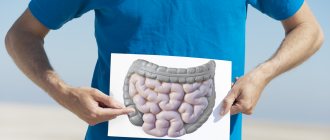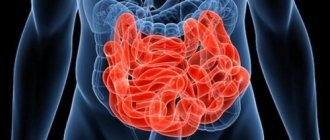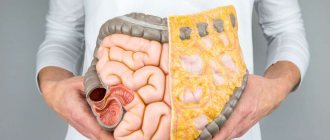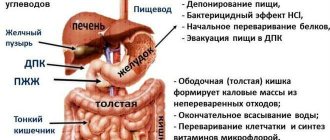Digestive enzymes of the gland juice play a major role in the digestion of food. The functioning of the digestive tract depends on the proper functioning and normal exocrine function of the pancreas. Fats, proteins and carbohydrates in their original form, in which they enter the body, cannot be immediately absorbed and take part in further biochemical reactions. During the digestion process, food components are broken down into their components, which subsequently take part in the main metabolic process. This occurs due to the contents of pancreatic juice. Thus, the activity of all organs and systems, the balanced existence of the body, is supported.
Digestive enzymes in saliva
The first stage of digestion is the passage of food through the mouth and esophagus. Here the food will be pre-grinded by the teeth.
When food comes into contact with the mucous membrane of the oral cavity, saliva is released through an unconditioned reflex. Saliva and other digestive juices are rich in digestive enzymes, often secreted by the sight or smell of food, although this is already associated with the body's conditioned reflexes.
The oral cavity produces up to 1.5 liters of saliva per day . This occurs due to the salivary glands. Saliva contains an enzyme for the breakdown of polysaccharides - alpha-amylase and mucin.
Functions of the large intestine
The most important functions of the large intestine are:
- Digestive - processing of food bolus with enzymes . Enzymes extract water and nutrients from food (the process of reabsorption);
- Muscular – increases (peristalsis increases when a new portion of food arrives) or reduces (at rest) the frequency of muscle contractions to move food masses;
- Reservoir - accumulation and retention of feces, gases;
- Absorptive - beneficial and nutrients are absorbed in the ascending, blind and descending sections of the colon, from where they are distributed to all organs through the lymphatic and blood channels;
- Protective - the mucous membrane protects the organ from destruction by digestive enzymes;
- The colon removes toxic substances from the body;
- Evacuation – removal of feces.
Colon diseases:
Other intestinal diseases and their treatment can be found here.
In the small intestine, is mixed with alkaline secretions of the pancreas , intestinal glands and liver , nutrients are depolymerized monomers ) that can enter the bloodstream, chyme moves distally excretion of metabolites, etc.
Digestive enzymes in the stomach
The stomach has the task of collecting, digesting and sterilizing the food eaten. That part of the food that enters the stomach later enters its central part and does not have direct contact with the gastric mucosa.
Only when food comes into contact with gastric juice, which contains digestive enzymes specific to the stomach, mineral salts, water, hydrochloric acid, does proper digestion begin .
The main cells of the gastric mucosa contain structures that secrete pepsinogens, that is, an enzyme that, under the influence of hydrochloric acid, is converted into pepsin. It breaks down large protein molecules into smaller ones called polypeptides .
The action of pepsin is to break peptide bonds in proteins. Ultimately, short and long chains of polypeptides are formed.
The large intestine and its role in digestion.
Under the influence of the motor activity of the small intestine, from 1.5 to 2 liters of chyme through the ileocecal valve enters the large intestine (colorectal gastrointestinal tract) , where the utilization of substances necessary for the body continues, the excretion of metabolites and salts of heavy metals , the accumulation of dehydrated intestinal contents and their removal from body. This part of the intestine provides immunobiological and competitive protection of the gastrointestinal tract from pathogenic microbes and the participation of normal intestinal microflora in digestion (enzymatic hydrolysis, synthesis and absorption of monosaccharides, vitamins E, A, K, D and group B). The large intestine is able to partially compensate for indigestion in the proximal digestive tract.
The enzyme-secreting process in the large intestine , as in the small intestine, consists of the formation and accumulation of enzymes in epithelial cells, followed by their rejection, decay and transfer of enzymes into the intestinal cavity. Peptidases, cathepsin, amylase, lipase, nuclease, and alkaline phosphatase are present in small amounts in colon juice. Enzymes supplied with food chyme from the small intestine also take part in the process of hydrolysis in the large intestine, but their significance is small. The enzymatic activity of normal intestinal microflora plays a major role in ensuring the hydrolysis of nutrient residues coming from the small intestine . The habitats of normal microorganisms are the terminal ileum and proximal colon.
The predominant microbes in the large intestine of an adult healthy person are non-sporeless obligate anaerobic bacilli (bifidum bacteria, constituting 90% of the entire intestinal flora) and facultative anaerobic bacteria (Escherichia coli, lactic acid bacteria, streptococci) . Intestinal microflora participates in the protective function of the macroorganism, determines the production of natural immunity factors , and in some cases protects the host body from the introduction and proliferation of pathogenic microbes. Normal intestinal microflora can break down glycogen and starch into monosaccharides, bile acid esters and other compounds present in chyme with the formation of a number of organic acids, ammonium salts, amines, etc. Intestinal microorganisms synthesize vitamin K, E and B vitamins (B1 B6, B12) and etc.
Microorganisms ferment carbohydrates into acidic products (lactic and acetic acid), as well as alcohol. The end products of putrefactive bacterial decomposition of proteins are toxic (indole, skatole) and biologically active amines (histamine, tyramine), hydrogen, sulfur dioxide and methane. The products of fermentation and decay, as well as the resulting gases, stimulate the motor activity of the intestine, ensuring its emptying (act of defecation).
Digestive enzymes in the small intestine
The small intestine is a very important part of the gastrointestinal tract, as it is where the processes of digestion of food to its simplest forms occur, as well as their absorption into the blood.
Digestive processes in the small intestine are facilitated by digestive enzymes contained in gastric juice, pancreatic juice and bile..
The initial section of the small intestine is called the duodenum. It contains duodenal glands, which secrete thick mucus that protects the duodenal mucosa from the acidic contents of the stomach, as well as intestinal glands, which produce intestinal juice.
It contains the following digestive enzymes:
- lipases – break down fats into fatty acids and glycerol
- aminopeptidases - decompose polypeptides into their simplest forms - amino acids
- digestive enzymes that break down polysaccharides into monosaccharides
- enzymes decompose nucleic acids to pentose , purine and pyramidal bases and phosphoric acid.
The second element necessary for the proper digestion process in the small intestine is pancreatic juice. It is secreted by the exocrine pancreas and then enters the duodenum through the pancreatic duct.
2 liters of pancreatic juice per day . It includes:
- protein-digesting enzymes : trypsinogen, chymotrypsinogen, elastase, carboxypeptidases
- enzymes for fat digestion : lipase, phospholipase and esterases
- multiple digesting enzymes : pancreatic amylase
The duodenal mucosa also secretes enterokinase, which activates trypsinogen, converting it into the active enzyme trypsin. This process affects the conversion of chymotrypsinogen to chymotrypsin.
Bile from the liver also enters the duodenum. The fatty acids it contains provide the process of fat emulsification. Emulsification is the process of breaking a homogeneous mass into small particles, which facilitates the digestion process.
Symptoms of deficiency and excess of enzyme production
For normal digestion of food, it is necessary to have a sufficient amount of enzymes in the produced pancreatic juice. Several pathologies associated with insufficient enzyme synthesis have been identified. According to the mechanism of development, they are classified as food intolerance.
Enzyme deficiency can occur at birth or be acquired. The first option develops as a result of gene damage; in the second case, the development of pathology occurs against the background of changes in the pancreatic parenchyma.
The reasons leading to an acquired lack of enzyme production can be different, sometimes not initially dependent on the condition of the gland, but are associated with external influences or changes in the internal organs. In the first place is any pathology of the pancreas, but the following factors can become a factor of disturbances:
- any severe diseases of human organs and systems;
- unfavorable environmental conditions;
- hypovitaminosis and lack of microelements, as well as protein deficiency in the diet;
- drug intoxication;
- infectious diseases;
- disturbance of intestinal microflora.
All the various causes that sometimes cause severe changes in enzymatic activity have common clinical manifestations. The degree of their severity depends on the severity of the underlying disease or the intensity of the influencing factor:
- decreased appetite;
- diarrhea;
- flatulence (bloating) of varying degrees, belching air;
- nausea and vomiting, in severe cases - repeated, not bringing relief;
- sudden weight loss - sometimes against the background of normal nutrition;
- in children - delayed physical development.
Such symptoms are characteristic of both congenital and acquired enzyme deficiency. In the case of genetic pathology, this can manifest itself from the first days of birth and is recognized by general symptoms: lethargy, tearfulness of the baby, anxiety, regurgitation after eating, frequent foul-smelling loose stools up to 8 or more times a day. The appearance of the stool is characteristic: foamy, profuse, with a sharp sour odor. This usually indicates a violation of carbohydrate metabolism and enzymes associated with it.
The condition and clinical manifestations resemble an intestinal infection, so a number of diagnostic tests are performed to clarify the diagnosis. As a result of the examination, it is revealed which specific enzyme deficiency the body is experiencing.
Today, several pathologies associated with a small amount of synthesized pancreatic enzymes have been studied:
- Lactase deficiency.
- Celiac disease is a disorder of the breakdown of gluten.
- Phenylketonuria is an amino acid deficiency.
Insufficient lactase production
Insufficiency in the production of lactase, the enzyme that breaks down milk sugar (lactose), manifests itself from the first days of a child’s life. The gland cannot secrete lactase. The complete absence of this enzyme or a sharp decrease in its release into the cavity of the small intestine can block the process of lactose breakdown. It is not absorbed in its original form and is not absorbed by the body. This is manifested by increased appetite. But the child remains hungry due to lack of satiety: lactose is not digested, is not broken down in the intestines and is not absorbed.
Upon examination, pronounced bloating of the abdomen, pain on palpation, frequent belching of air, and regurgitation of milk after feeding are revealed. Frequent, foul-smelling green stools may continue every 2 to 3 hours. There is constant tearfulness, moodiness, and poor sleep.
Celiac disease
It appears in a child when complementary feeding with cereals begins. The development of pathology is associated with the inability of the pancreas to produce a proteolytic enzyme that breaks down the protein gliadin. It is found in all cereals, with the exception of rice, corn, and buckwheat. The stomach and intestines do not digest protein.
When Do You Need Digestive Enzyme Supplements?
In order for nutrients to be absorbed, they must be adequately digested. If any of the above processes of digestive enzyme secretion are disrupted, it will lead to malabsorption and hence nutritional deficiencies. This is especially true for impaired exocrine pancreatic function.
Predispose to this condition:
- chronic pancreatitis
- cystic fibrosis
- blockage of the pancreatic or gallbladder duct
This leads to digestive and absorption problems, so it is recommended to take pancreatic enzymes in such cases.
Methods for diagnosing pathologies
To diagnose the functional state of the pancreas, biochemical and instrumental research methods are used.
In addition, liver functions are determined - bilirubin, transaminases, total protein and its fractions, blood glucose.
The presence of amino acids is detected in the urine.
To detect phenylketonuria, a congenital pathology of the pancreas, the determination of phenylalanine in the blood is used. These tests are performed in maternity hospitals on all newborns on days 4–5 of life. According to WHO recommendations, the pathology is included in the list of hereditary diseases recommended for early diagnosis.
Celiac disease is detected by serological diagnostic methods with the determination of antibodies and antigens for gluten intolerance.
Lactase deficiency is confirmed by the results of blood tests and analysis of the lactose curve: lactose stimulation is carried out - the patient is given lactose in a small dosage, then the blood is tested. The level of lactose in the urine is also determined, where it enters in small quantities.
Instrumental research methods are used for differential diagnosis and exclusion of organic damage to pancreatic tissue or the presence of stones, cysts, and inflammatory processes. Conducted:
- Ultrasound;
- CT;
- MRI.
What tests are needed to determine enzymes?
Blood and urine tests are studied for the activity of the main enzymes:
- amylase;
- trypsin;
- lipases.
A coprogram in the presence of undigested muscle fibers, fats, and starch particles indicates insufficient enzyme content.
The main indicator when studying stool analysis is elastase. Reducing it can help cure the disease and make the digestive organs function normally.
Organ structure
The small intestine (intestinum tenue) extends from the gastric pylorus, forms many loops and passes into the large intestine. In the initial section, the circumference of the intestine is 40–50 mm, at the end it is 20–30 mm, the length of the intestine can reach up to 5 meters.
Sections of the small intestine:
- The duodenum (duodenum) is the shortest (25–30 cm) and widest part. It is shaped like a horseshoe, comparable in length to the width of 12 fingers, which is how it got its name.
- Jejunum (length 2–2.5 meters),
- Ileum (length 2.5–3 meters).
The wall of the small intestine consists of the following layers:
- The mucous membrane lines the inner surface of the organ; 90% of its cells are enterocytes, which provide digestion and absorption. It has a relief: villi, circular folds, crypts (tubular protrusions),
- The lamina propria (submucosal layer) is an accumulation of fat cells, where the nerve and choroid plexuses are located,
- The muscle layer is formed by 2 membranes: circular (inner) and longitudinal (outer). Between the membranes is a nerve plexus that controls contraction of the intestinal wall,
- Serous layer - covers the small intestine on all sides, with the exception of the duodenum.
The blood supply to the small intestine is provided by the hepatic and mesenteric arteries. Innervation (supply of nerve fibers) comes from the plexuses of the autonomic nervous system of the abdominal cavity and the vagus nerve.











